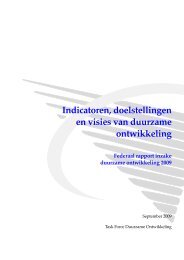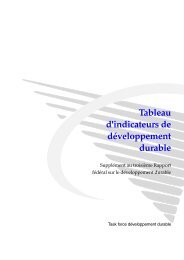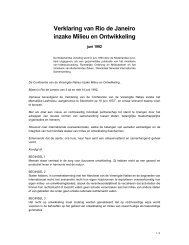long-term care use and supply in europe: projections for germany ...
long-term care use and supply in europe: projections for germany ...
long-term care use and supply in europe: projections for germany ...
You also want an ePaper? Increase the reach of your titles
YUMPU automatically turns print PDFs into web optimized ePapers that Google loves.
1. Introduction<br />
Long-Term Care Use <strong>and</strong> Supply <strong>in</strong> Europe:<br />
Projection Models <strong>and</strong> Results <strong>for</strong> Germany,<br />
the Netherl<strong>and</strong>s, Spa<strong>in</strong> <strong>and</strong> Pol<strong>and</strong><br />
ENEPRI Research Report No. 116/April 2012<br />
Joanna Geerts, Peter Willemé <strong>and</strong> Esther Mot (eds) *<br />
Sharp <strong>in</strong>creases <strong>in</strong> the numbers of older persons <strong>and</strong> an improved survival of disabled older persons are<br />
expected to ca<strong>use</strong> an <strong>in</strong>crease <strong>in</strong> the dem<strong>and</strong> <strong>for</strong> <strong>and</strong> <strong>use</strong> of <strong>long</strong>-<strong>term</strong> <strong>care</strong> (LTC) <strong>in</strong> the com<strong>in</strong>g decades<br />
<strong>in</strong> all European countries. At the same time population age<strong>in</strong>g is likely to have a profound impact on the<br />
future availability of both <strong>for</strong>mal <strong>and</strong> <strong>in</strong><strong>for</strong>mal <strong>care</strong>givers. Generally, LTC systems <strong>in</strong> Europe consist of<br />
a range of home <strong>and</strong> residential <strong>care</strong> services, <strong>and</strong> significant <strong>in</strong><strong>for</strong>mal <strong>care</strong>, ma<strong>in</strong>ly provided by partners<br />
<strong>and</strong> children. However, as work packages (WP) 1 <strong>and</strong> 3 of the ANCIEN project <strong>and</strong> other comparative<br />
studies have demonstrated, European countries differ considerably <strong>in</strong> how they organise, f<strong>in</strong>ance <strong>and</strong><br />
allocate LTC. There is considerable variation not only <strong>in</strong> levels of <strong>for</strong>mal <strong>and</strong> <strong>in</strong><strong>for</strong>mal <strong>care</strong> <strong>use</strong>, but also<br />
<strong>in</strong> how <strong>care</strong> <strong>use</strong> is related to disability, ho<strong>use</strong>hold composition, <strong>and</strong> other characteristics of older<br />
persons. Supply side analyses of WP 3 have also shown large country differences <strong>in</strong> the prevalence of<br />
<strong>in</strong><strong>for</strong>mal <strong>care</strong>giv<strong>in</strong>g <strong>and</strong> <strong>in</strong> <strong>for</strong>mal <strong>care</strong> work<strong>for</strong>ce participation rates. Furthermore, as has been shown <strong>in</strong><br />
WP2, current <strong>and</strong> predicted disability levels are much higher <strong>in</strong> some countries than <strong>in</strong> others. How<br />
population age<strong>in</strong>g <strong>and</strong> other societal trends (e.g. chang<strong>in</strong>g liv<strong>in</strong>g arrangements, higher female<br />
employment rates) will affect future <strong>use</strong> <strong>and</strong> <strong>supply</strong> of <strong>for</strong>mal <strong>and</strong> <strong>in</strong><strong>for</strong>mal <strong>care</strong> is there<strong>for</strong>e likely to<br />
differ considerably across European countries.<br />
The aim of this report is to make <strong>projections</strong> of future <strong>use</strong> <strong>and</strong> <strong>supply</strong> of <strong>for</strong>mal <strong>and</strong> <strong>in</strong><strong>for</strong>mal <strong>care</strong> <strong>for</strong><br />
different LTC systems. Projections are made up to 2060 <strong>for</strong> four countries: Germany, the Netherl<strong>and</strong>s,<br />
Spa<strong>in</strong> <strong>and</strong> Pol<strong>and</strong>, us<strong>in</strong>g a st<strong>and</strong>ardised methodology. The countries were selected <strong>in</strong> WP 1 as<br />
representative of clusters of countries with different LTC systems, based on four <strong>in</strong>dicators of <strong>use</strong> <strong>and</strong><br />
f<strong>in</strong>anc<strong>in</strong>g of <strong>care</strong>: i) public LTC expenditure as a share of GDP <strong>and</strong> corrected <strong>for</strong> the share of persons<br />
aged 65 <strong>and</strong> over, ii) private expenditure as a share of LTC spend<strong>in</strong>g, iii) the share of <strong>in</strong><strong>for</strong>mal <strong>care</strong> <strong>use</strong>rs<br />
among the 65+ population, <strong>and</strong> iv) support measures <strong>for</strong> <strong>in</strong><strong>for</strong>mal <strong>care</strong>givers (Kraus et al., 2010). The<br />
typology of LTC systems is presented <strong>in</strong> Table 1.1 below.<br />
Cluster 1, to which Germany be<strong>long</strong>s, consists of countries <strong>in</strong> which a low level of public spend<strong>in</strong>g is<br />
comb<strong>in</strong>ed with a modest share of private spend<strong>in</strong>g, high <strong>in</strong><strong>for</strong>mal <strong>care</strong> <strong>use</strong> <strong>and</strong> high <strong>in</strong><strong>for</strong>mal <strong>care</strong><br />
support. The Netherl<strong>and</strong>s be<strong>long</strong>s to a cluster of Northern European countries characterized by high<br />
public LTC spend<strong>in</strong>g, low private spend<strong>in</strong>g, low <strong>in</strong><strong>for</strong>mal <strong>care</strong> <strong>use</strong> <strong>and</strong> high <strong>in</strong><strong>for</strong>mal <strong>care</strong> support. Spa<strong>in</strong><br />
<strong>and</strong> the other countries of cluster 3 share the profile of cluster 1 with regard to <strong>in</strong><strong>for</strong>mal <strong>care</strong> <strong>use</strong> <strong>and</strong><br />
support, but have a much higher level of private responsibility <strong>and</strong> a somewhat higher level of public<br />
spend<strong>in</strong>g. Pol<strong>and</strong> is allocated to cluster 4, which is characterized by a small public sector <strong>in</strong>volvement,<br />
more private spend<strong>in</strong>g, high <strong>in</strong><strong>for</strong>mal <strong>care</strong> provision but few supportive measures <strong>for</strong> <strong>in</strong><strong>for</strong>mal<br />
<strong>care</strong>givers. Cluster 2 is ranked by Kraus et al. (2010) as the most attractive from the po<strong>in</strong>t of view of<br />
older persons <strong>in</strong> need of <strong>care</strong>. Cluster 1 <strong>and</strong> 3 share second <strong>and</strong> third place, <strong>and</strong> cluster 4 is placed fourth<br />
<strong>in</strong> the rank<strong>in</strong>g.<br />
* Joanna Geerts is researcher <strong>and</strong> Peter Willemé is health economist <strong>in</strong> the Social Security Research Group at the<br />
Federal Plann<strong>in</strong>g Bureau (FPB); Esther Mot is senior researcher <strong>in</strong> the Netherl<strong>and</strong>s Bureau <strong>for</strong> Economic Policy<br />
Analysis (CPB).<br />
Note: This report <strong>use</strong>s data from SHARE release 2.3.1, as of July 29th 2010. SHARE data collection <strong>in</strong> 2004-2007<br />
was primarily funded by the European Commission through its 5th <strong>and</strong> 6th framework programmes (project<br />
numbers QLK6-CT-2001- 00360; RII-CT- 2006-062193; CIT5-CT-2005-028857). Additional fund<strong>in</strong>g by the US<br />
National Institute on Ag<strong>in</strong>g (grant numbers U01 AG09740-13S2; P01 AG005842; P01 AG08291; P30 AG12815;<br />
Y1-AG-4553-01; OGHA 04-064; R21 AG025169) as well as by various national sources is gratefully<br />
acknowledged (see http://www.share-project.org <strong>for</strong> a full list of fund<strong>in</strong>g <strong>in</strong>stitutions).<br />
| 1
















